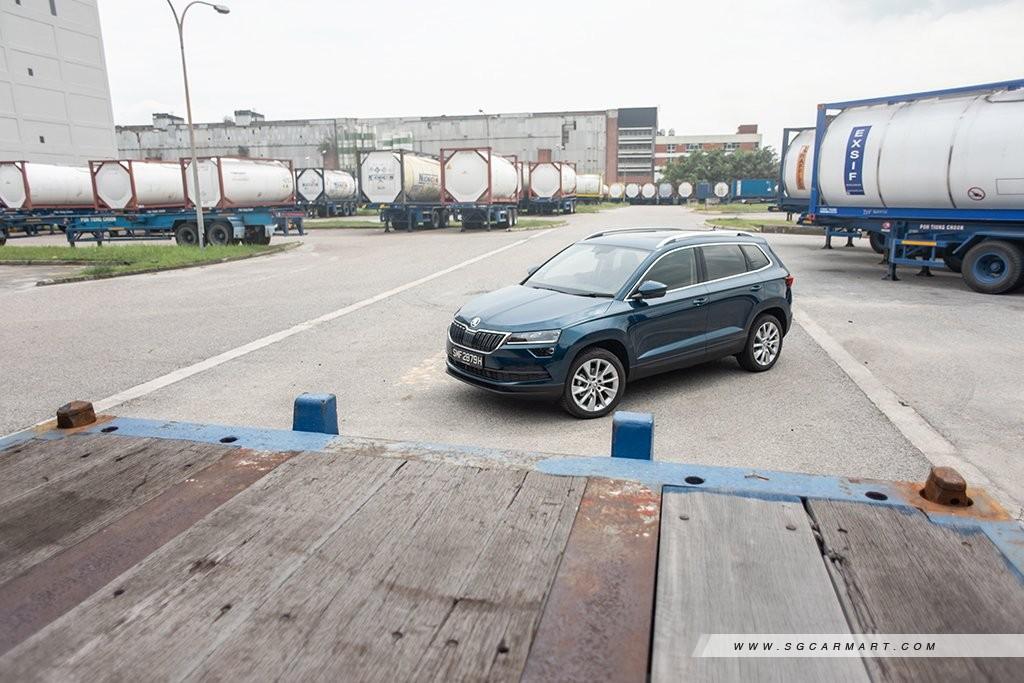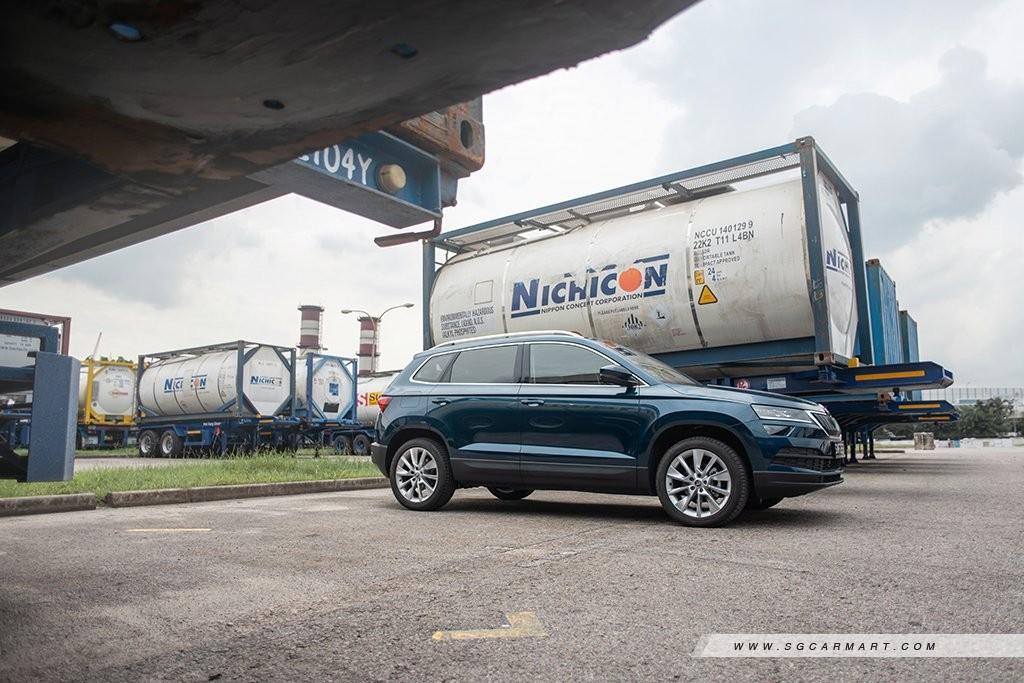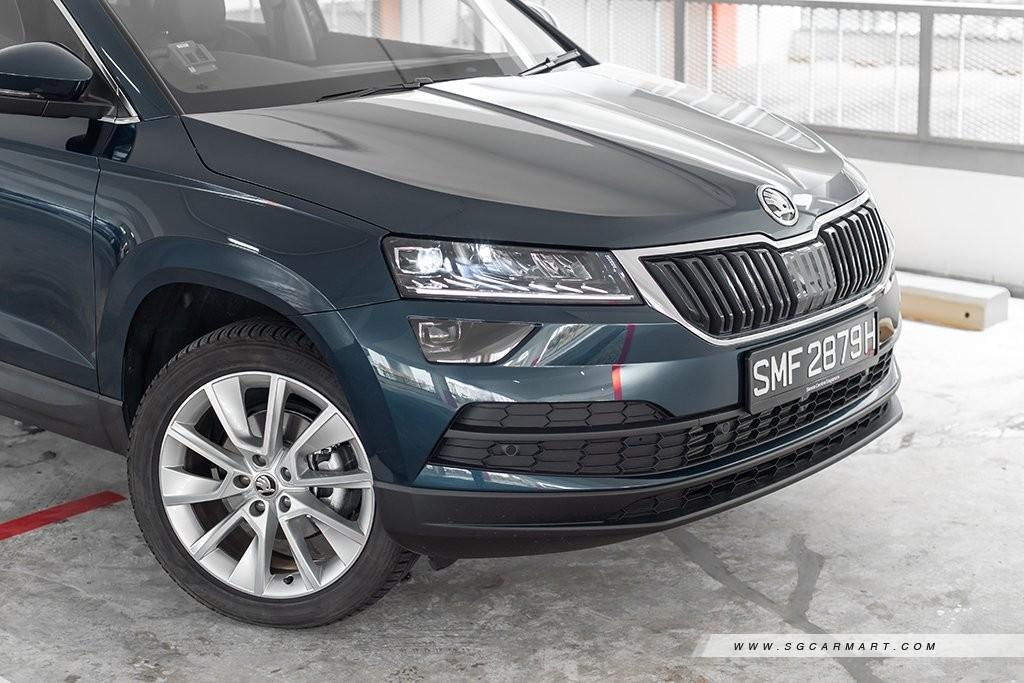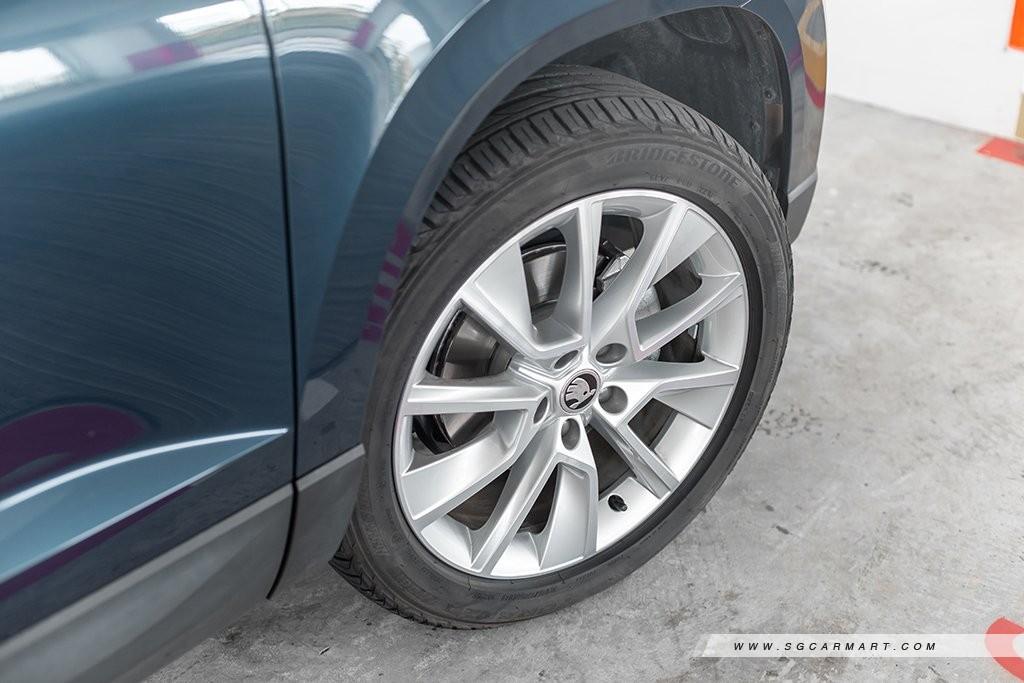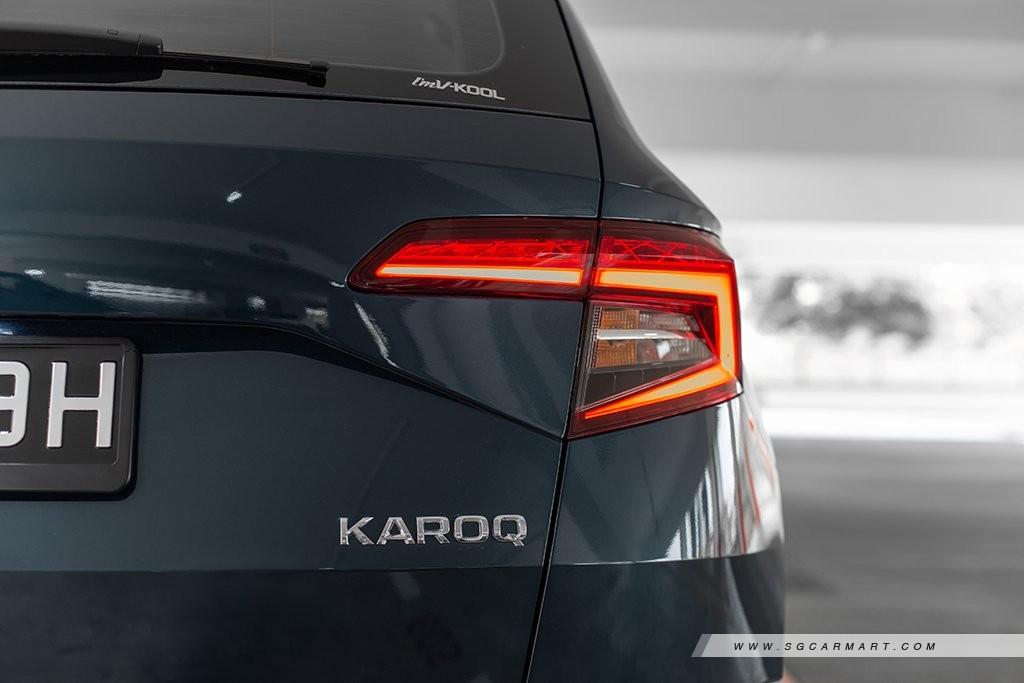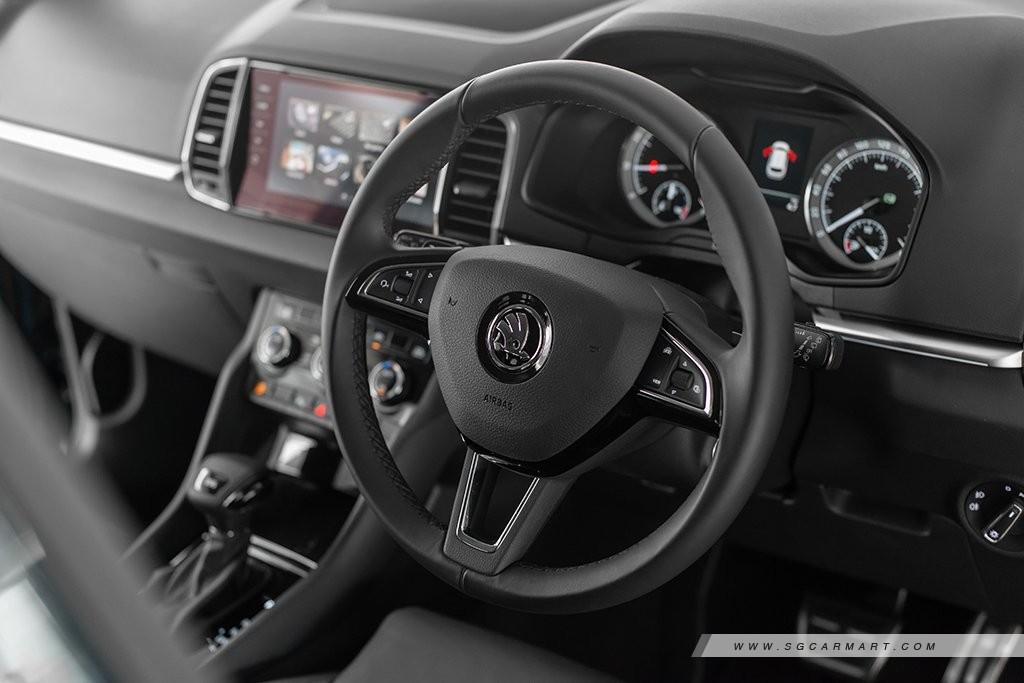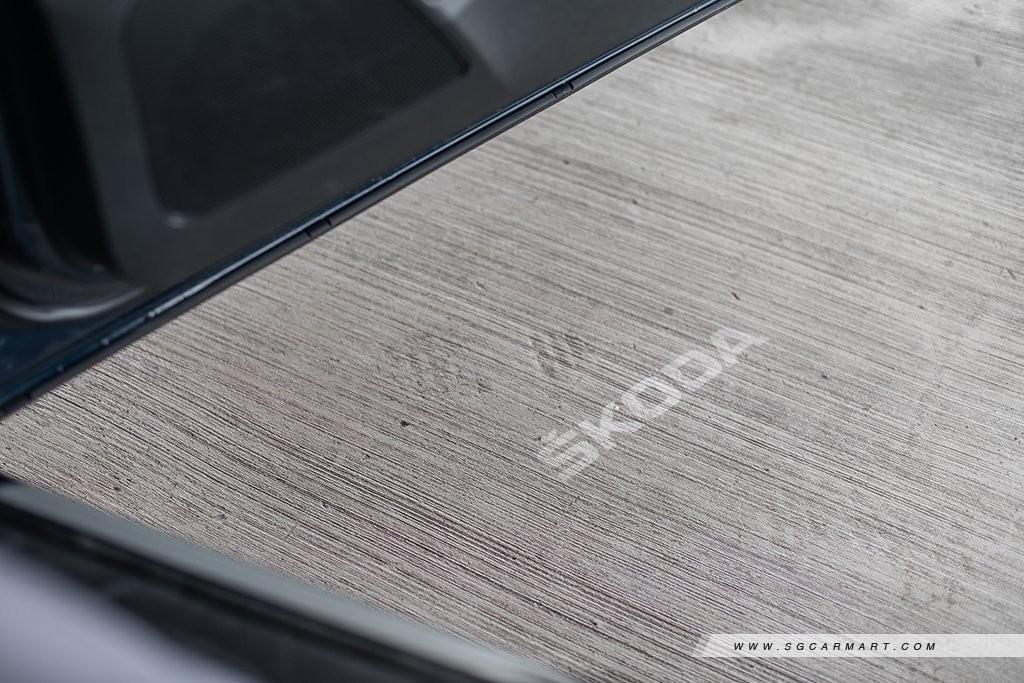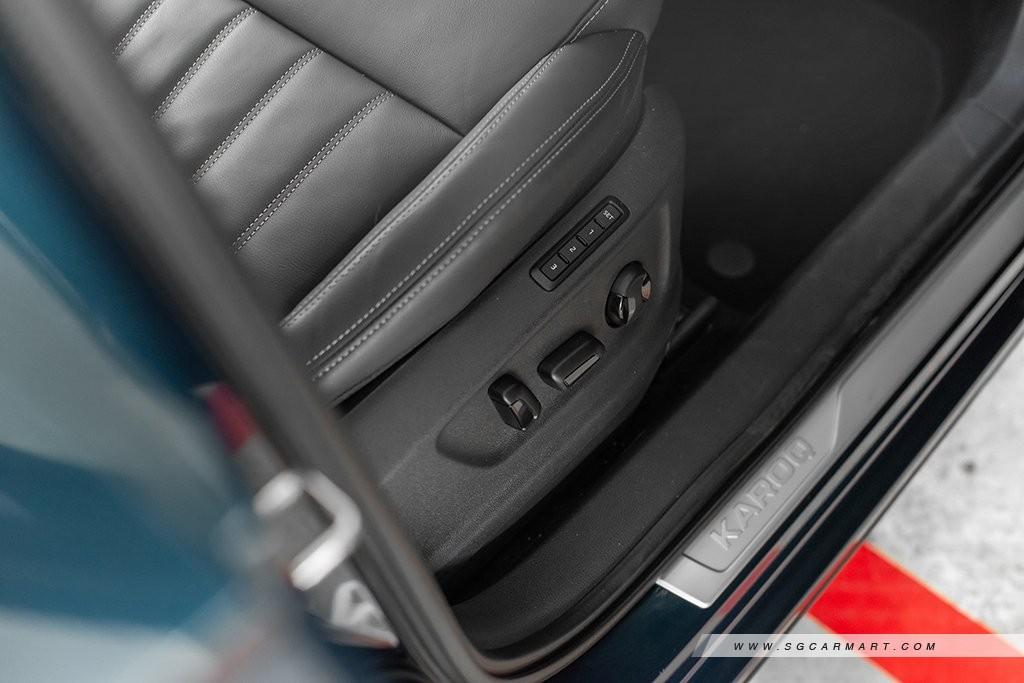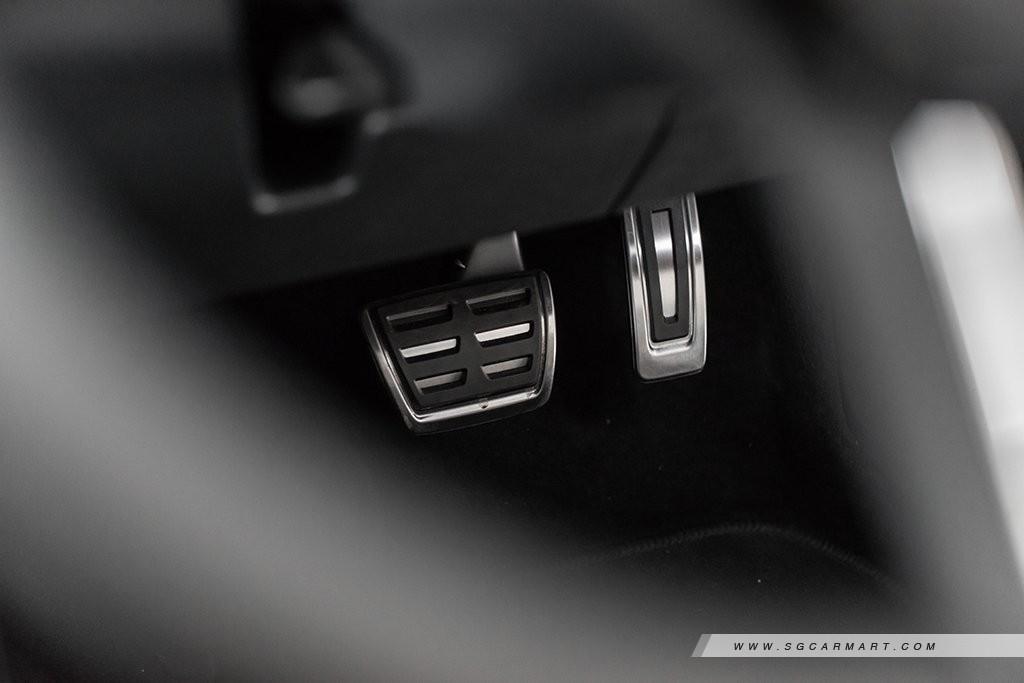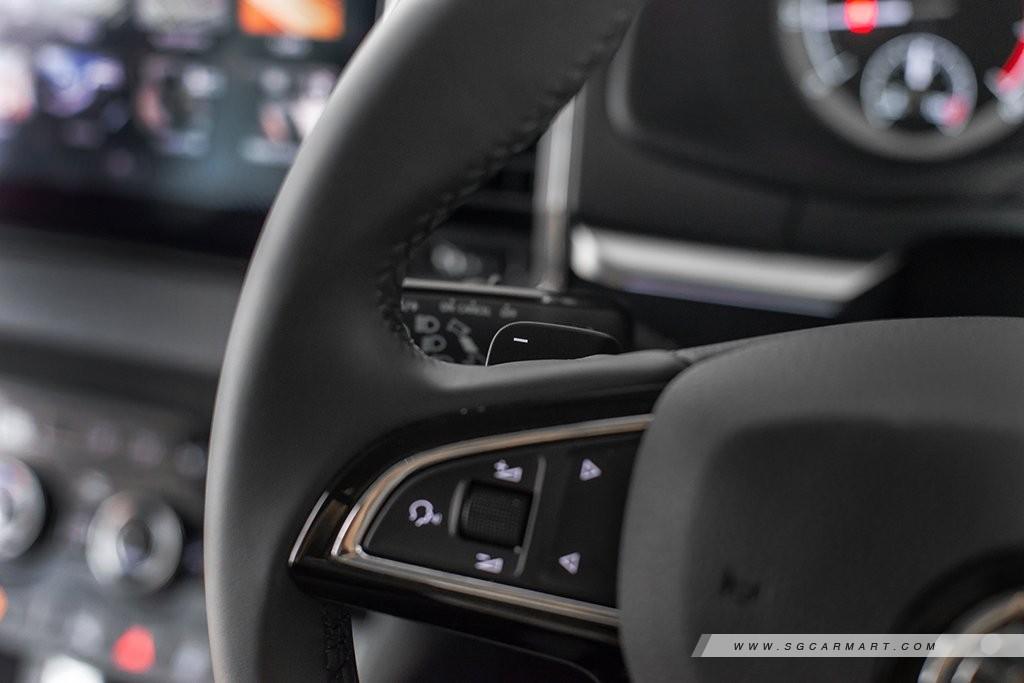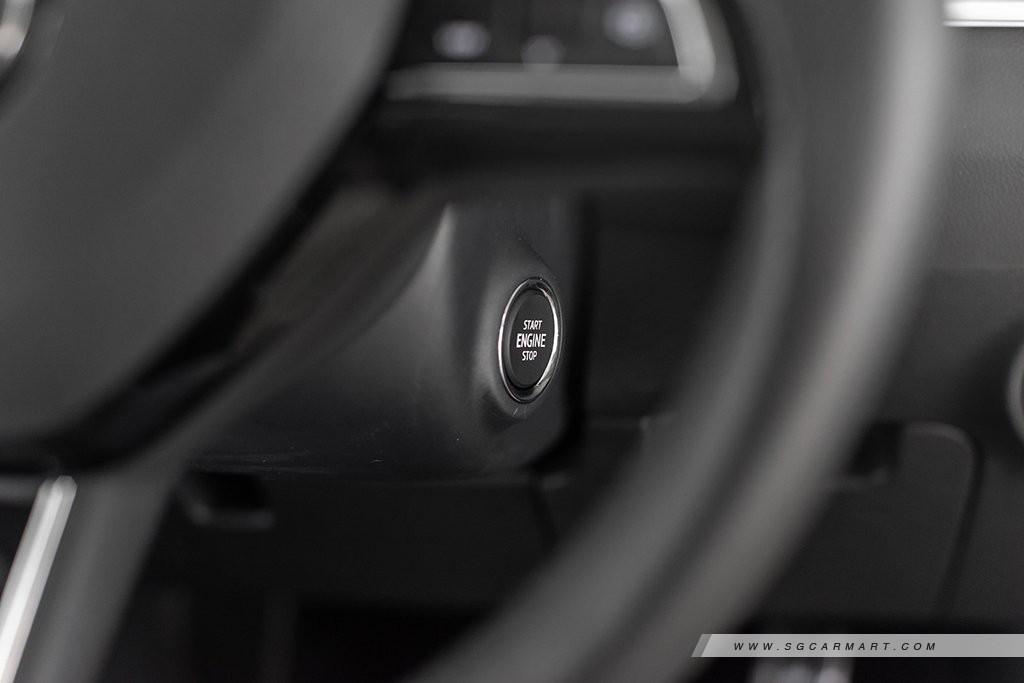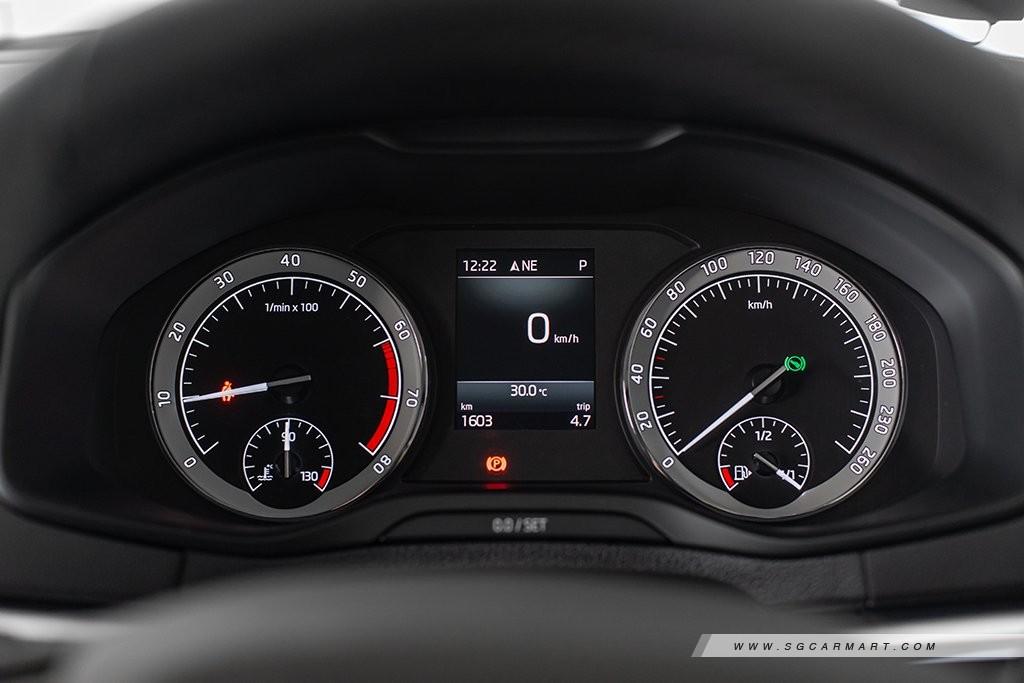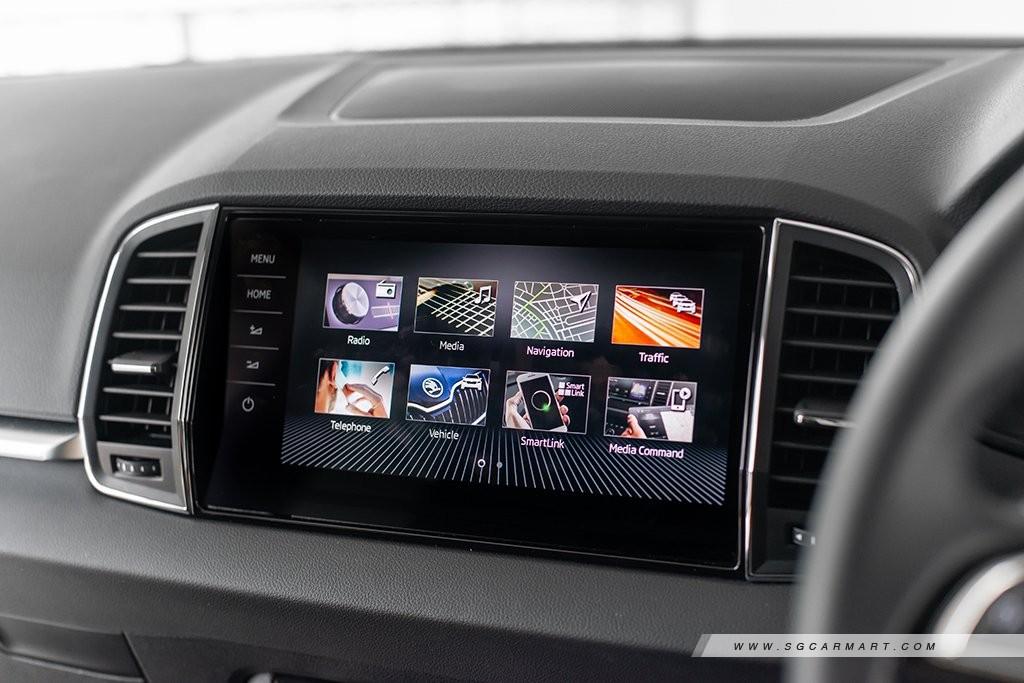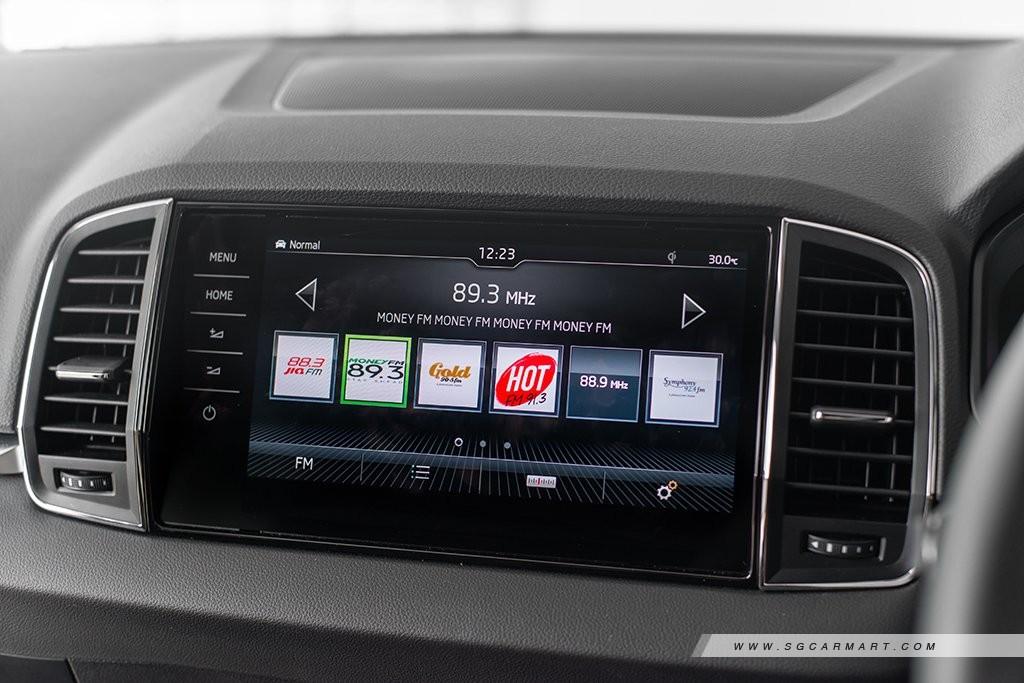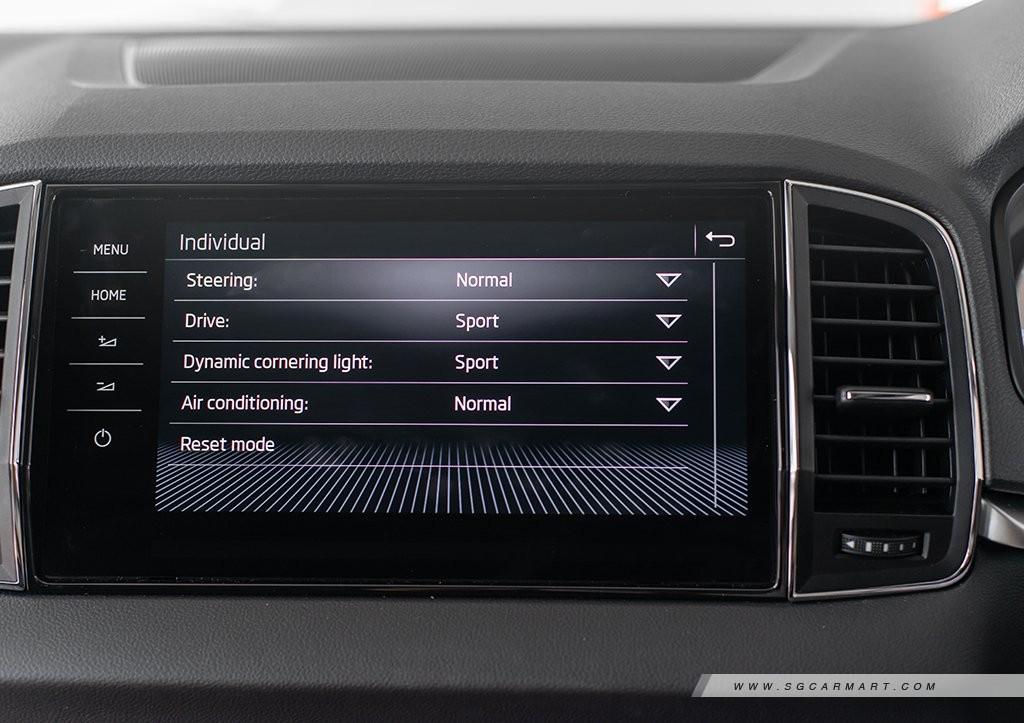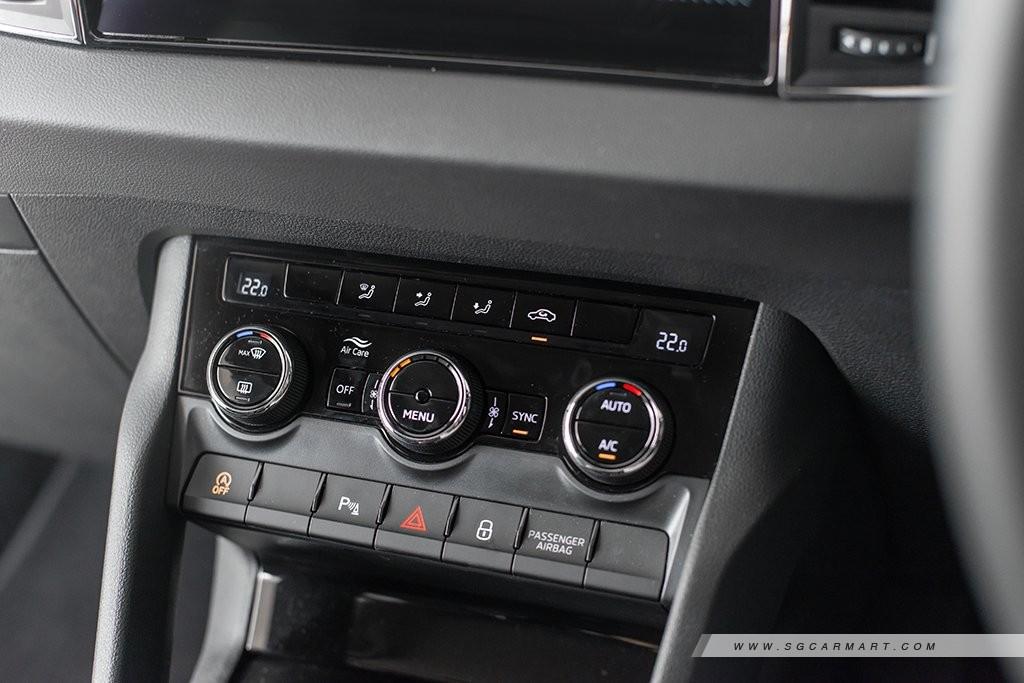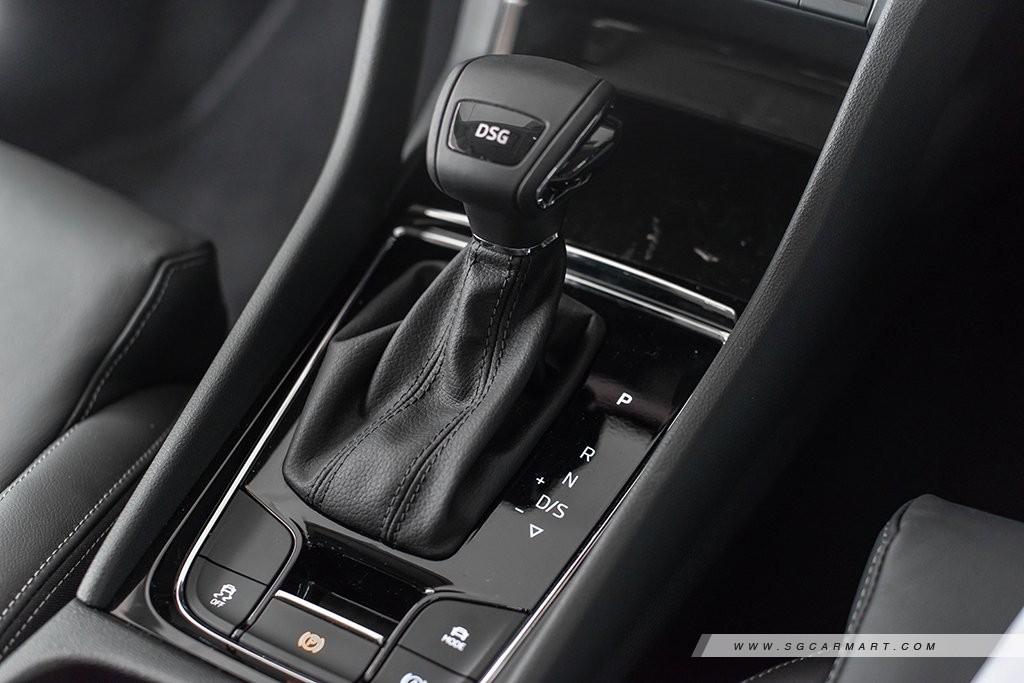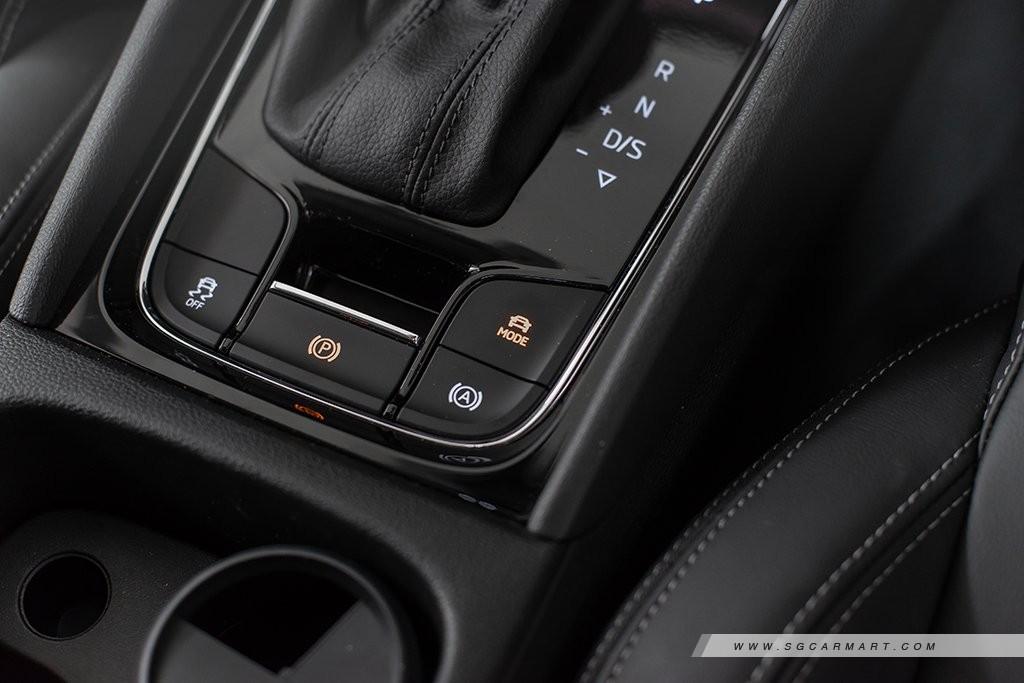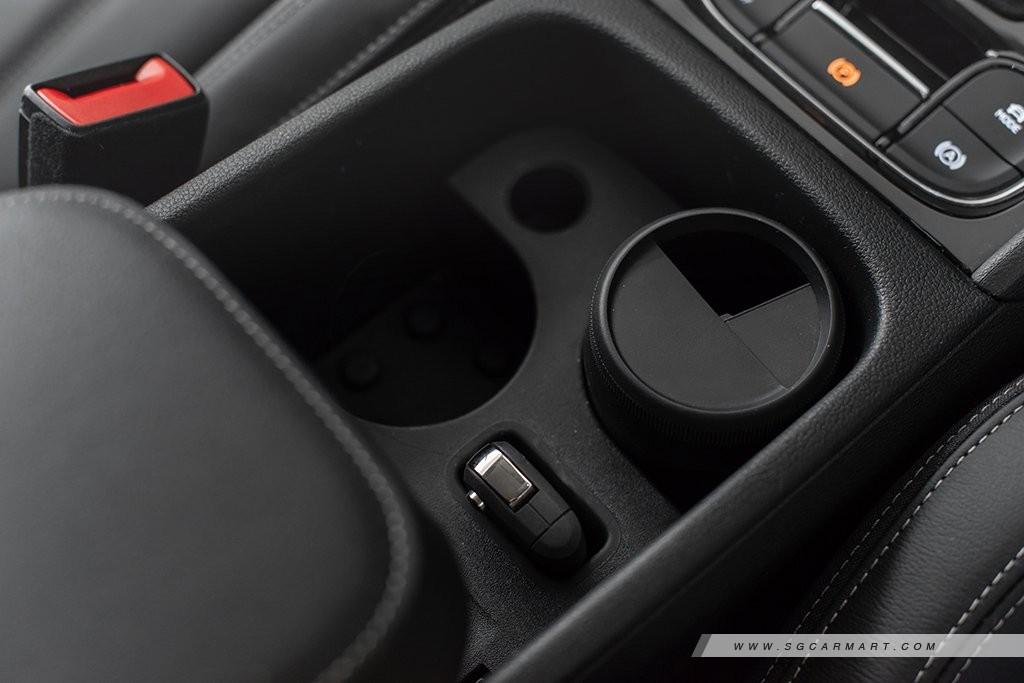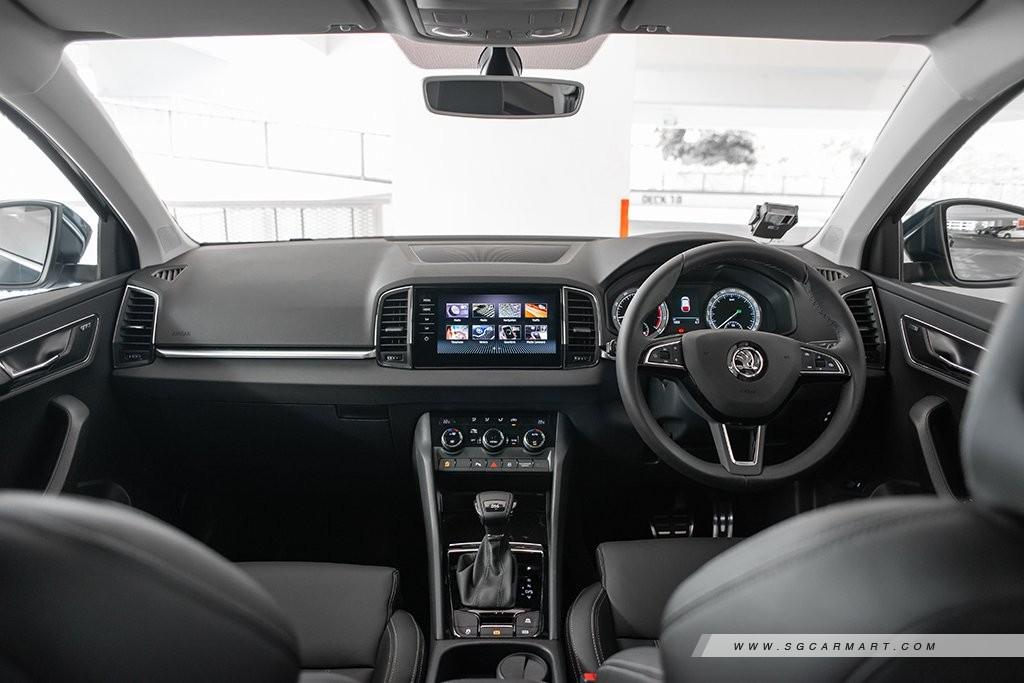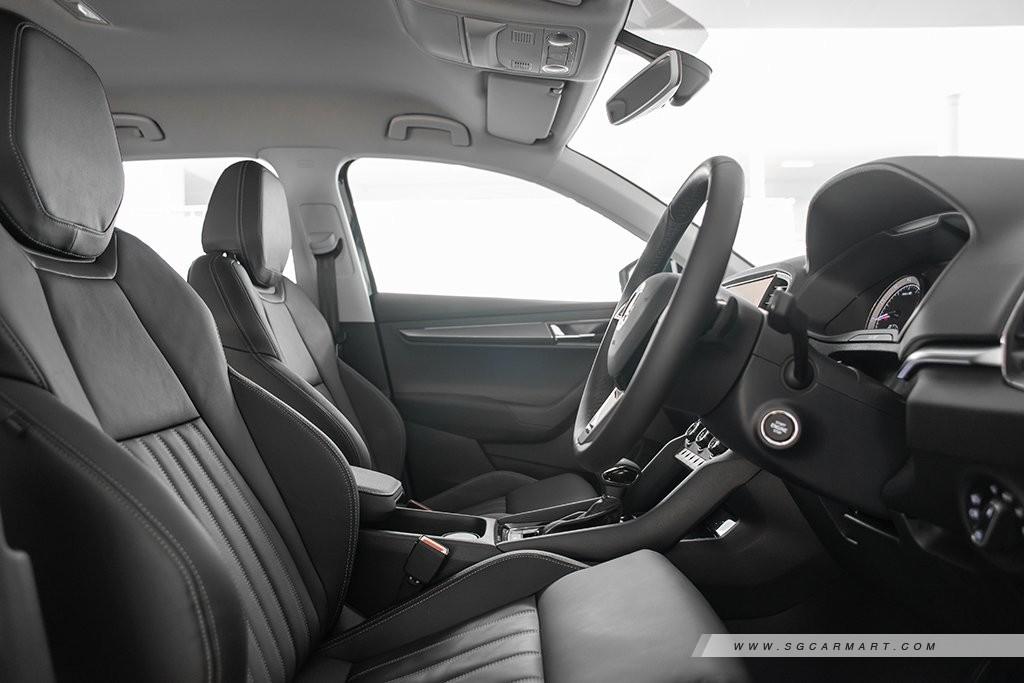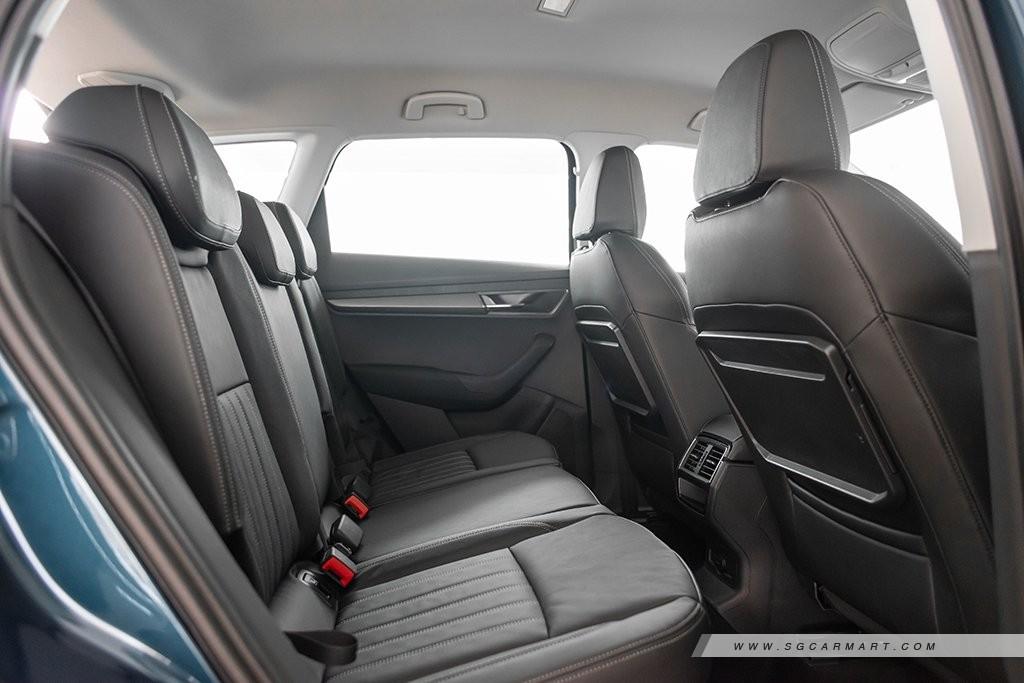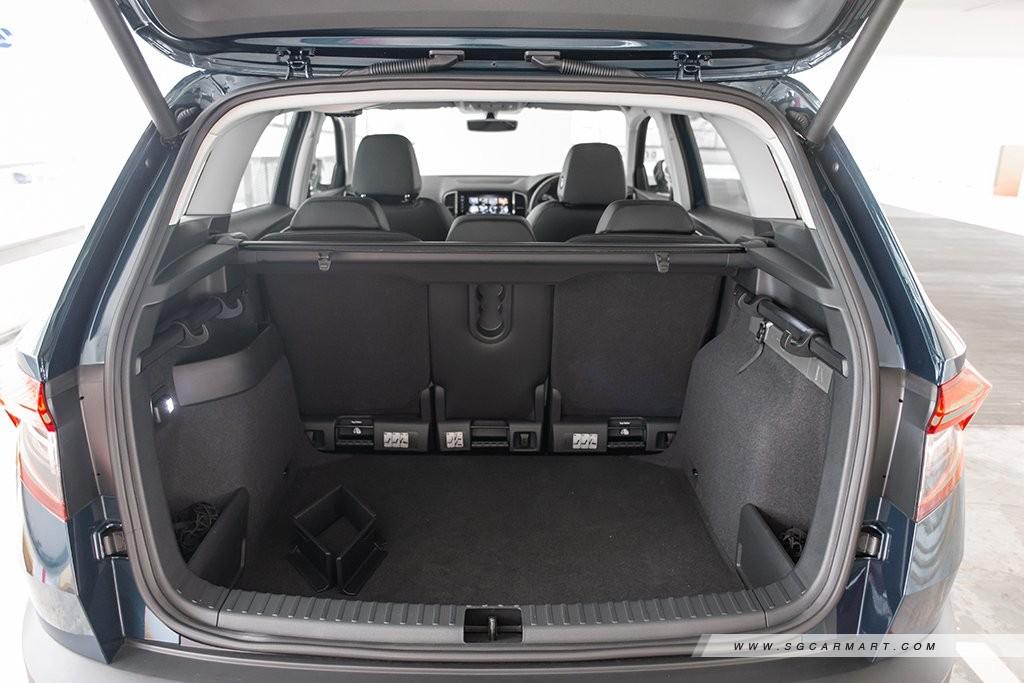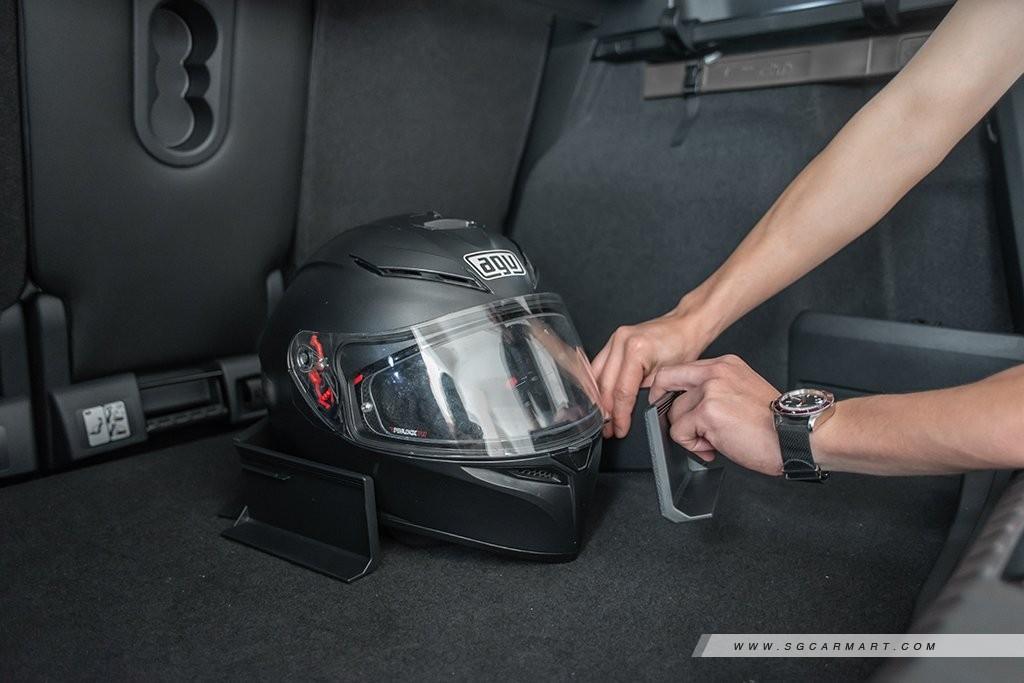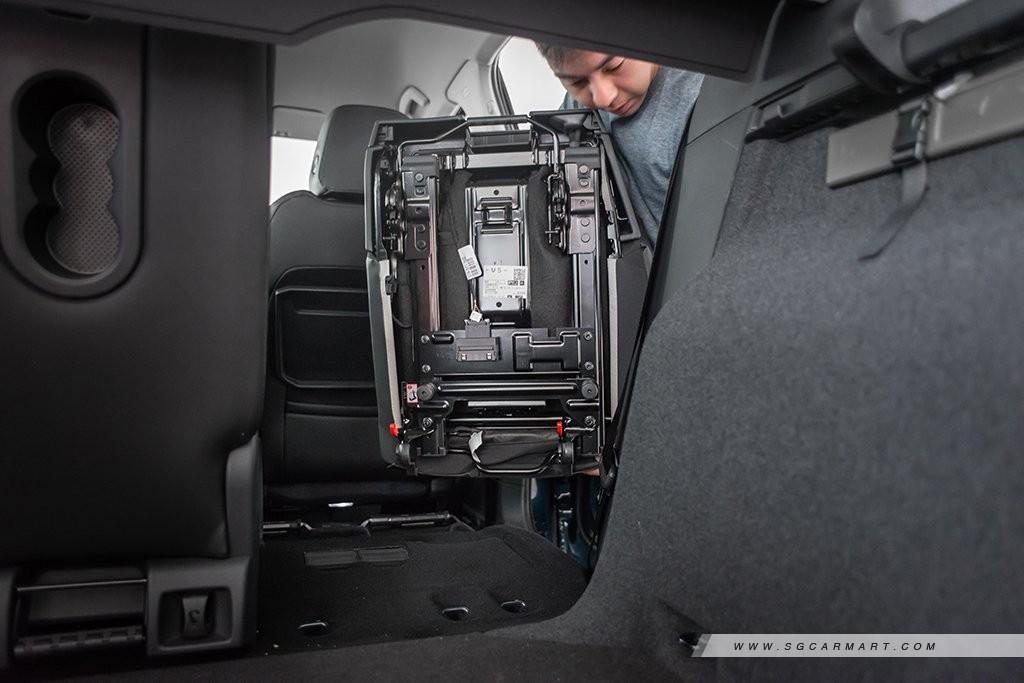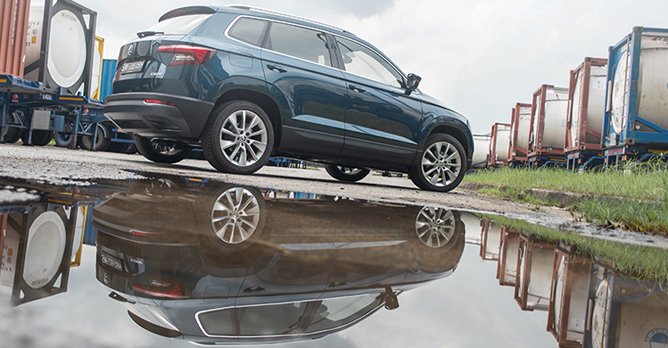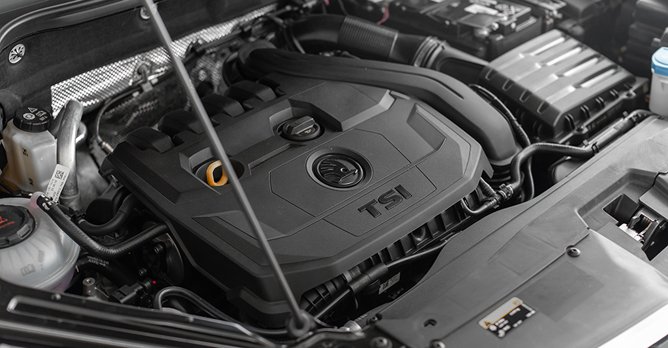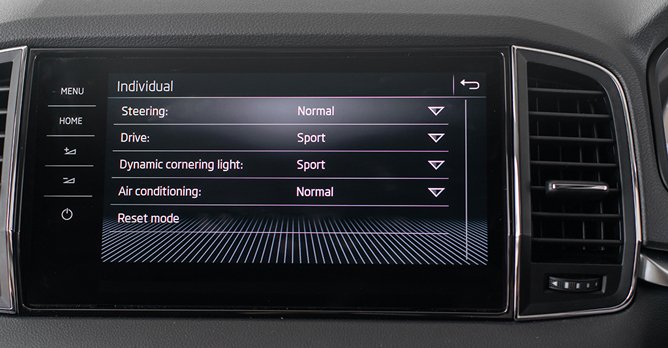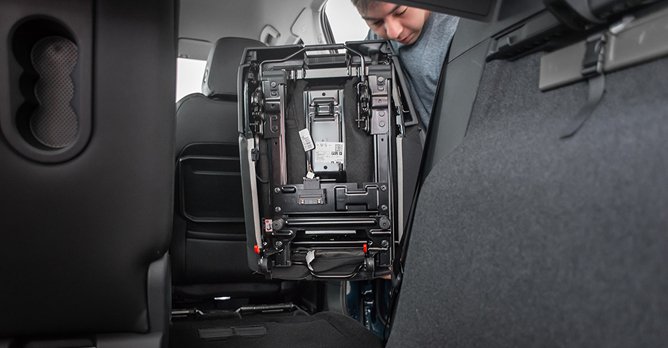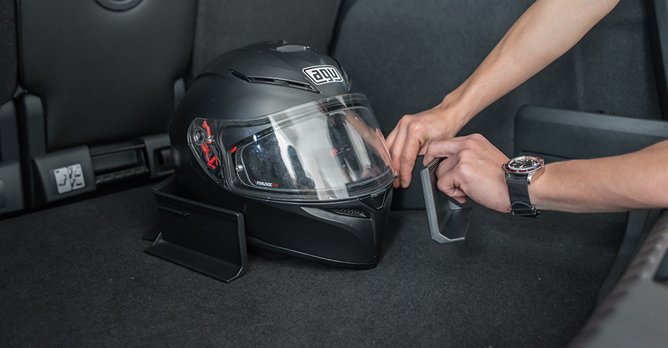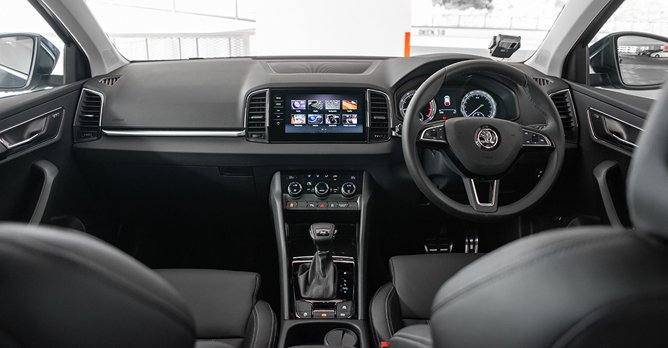Skoda Karoq 1.5 TSI Style (A) Review
21 Dec 2018|18,256 views
What We Like
Creamy and economical turbocharged 1.5-litre
Sporty yet comfortable
Lots of clever features such as completely removable rear seats
Cabn fit and finish is great
What We Dislike
Air-conditioning could be a bit stronger
Skoda's return into Singapore earlier this year brought us several new models, which gave new meaning to the term 'bang-for-buck', thanks to Teutonic refinement and clever storage solutions sans premium price tags.
And its latest offering, launched just a month ago, continues to deliver just that. Called the Karoq, it is Skoda's second take on the ever-competitive crossover market and is built on the Volkswagen Group's MQB platform.
In Skoda's lineup, the Karoq sits under the bigger, seven-seater Kodiaq and effectively replaces the Yeti. Size-wise, it is similar to Group sister model, the Seat Ateca, but slightly longer in length and wheelbase.
Does it mean it shares the Group's familiar 1.4 TSI?
Surprisingly, no. Unlike the Ateca, the Karoq's 148bhp and 250Nm of torque comes from a turbocharged 1.5-litre, four-cylinder engine equipped with cylinder deactivation technology.
Under light load conditions (think slow cruising), two of its four cylinders shut down to help improve fuel economy.
Skoda claims that with cylinder deactivation, the Karoq is capable of achieving an average of 17.2km/L. Over our three-day drive, we managed 14.8km/L, which is very close to marketed figures.
On the go, the Karoq gets up to speed very smoothly, and acceleration is perky enough, aided by creamy and decisive gear changes by its seven-speed dual-clutch.
Most impressive is the fact that it offers Audi levels of refinement, both in terms of its powertrain characteristics as well as the way it rides. Like its modern Group siblings, the Karoq manages a sweet balance between comfort and sportiness.
Its steering is sharp, helping with quick directional changes and its suspension is firm enough to keep up without messing up the quality of damping.
One of the most immediately noticeable traits is the way it soaks up lumps and bumps you happen to drive over.
And its latest offering, launched just a month ago, continues to deliver just that. Called the Karoq, it is Skoda's second take on the ever-competitive crossover market and is built on the Volkswagen Group's MQB platform.
In Skoda's lineup, the Karoq sits under the bigger, seven-seater Kodiaq and effectively replaces the Yeti. Size-wise, it is similar to Group sister model, the Seat Ateca, but slightly longer in length and wheelbase.
Does it mean it shares the Group's familiar 1.4 TSI?
Surprisingly, no. Unlike the Ateca, the Karoq's 148bhp and 250Nm of torque comes from a turbocharged 1.5-litre, four-cylinder engine equipped with cylinder deactivation technology.
Under light load conditions (think slow cruising), two of its four cylinders shut down to help improve fuel economy.
Skoda claims that with cylinder deactivation, the Karoq is capable of achieving an average of 17.2km/L. Over our three-day drive, we managed 14.8km/L, which is very close to marketed figures.
On the go, the Karoq gets up to speed very smoothly, and acceleration is perky enough, aided by creamy and decisive gear changes by its seven-speed dual-clutch.
Most impressive is the fact that it offers Audi levels of refinement, both in terms of its powertrain characteristics as well as the way it rides. Like its modern Group siblings, the Karoq manages a sweet balance between comfort and sportiness.
Its steering is sharp, helping with quick directional changes and its suspension is firm enough to keep up without messing up the quality of damping.
One of the most immediately noticeable traits is the way it soaks up lumps and bumps you happen to drive over.
What about its practical bits as a family crossover?
This is perhaps where the Karoq shines the brightest, even wiping the floor with its rivals. Its VarioFlex rear seats split evenly rather than 60/40, individually slide and recline, and can be completely removed.
The ability to remove all three rear seats completely is a handy feature should you need to ferry bulky furniture, or shed some weight if you decide to take it to Sepang.
In doing so, the Karoq's already generous 521-litre boot expands to a total of 1,810 litres. The boot is also equipped with a pair of velcro-affixed partitions, easy-to-fasten netting and an LED flashlight.
Other 'Simply Clever' features include a front multi-function cup holder, folding trays on the back of the front seats, as well as a retractable parcel shelf. Elsewhere, fit and finish of the cabin feels more expensive than what's expected of a $122,900 crossover.
You also get useful luxuries like a 9.2-inch 'Columbus' navigation system that allows for Apple CarPlay and Android Auto connectivity and wireless smartphone charging.
If you opt for the entry-level 'Ambition' trim, safety nannies like electronic stability control, cruise control, rear-view camera and park distance control come standard. Our test car in 'Style' trim has extras like front assist with city emergency brake, as well as blind spot detect with rear traffic alert.
That really sounds like extremely good value!
It definitely is. At $122,900, the Karoq's rivals such as the Mazda CX-5, Nissan Qashqai and the Opel Crossland X will not be able to offer as good a combination of space, pace and grace.
As a crossover for the family, few will match what the Karoq can offer, not even those that are more expensive.
This is perhaps where the Karoq shines the brightest, even wiping the floor with its rivals. Its VarioFlex rear seats split evenly rather than 60/40, individually slide and recline, and can be completely removed.
The ability to remove all three rear seats completely is a handy feature should you need to ferry bulky furniture, or shed some weight if you decide to take it to Sepang.
In doing so, the Karoq's already generous 521-litre boot expands to a total of 1,810 litres. The boot is also equipped with a pair of velcro-affixed partitions, easy-to-fasten netting and an LED flashlight.
Other 'Simply Clever' features include a front multi-function cup holder, folding trays on the back of the front seats, as well as a retractable parcel shelf. Elsewhere, fit and finish of the cabin feels more expensive than what's expected of a $122,900 crossover.
You also get useful luxuries like a 9.2-inch 'Columbus' navigation system that allows for Apple CarPlay and Android Auto connectivity and wireless smartphone charging.
If you opt for the entry-level 'Ambition' trim, safety nannies like electronic stability control, cruise control, rear-view camera and park distance control come standard. Our test car in 'Style' trim has extras like front assist with city emergency brake, as well as blind spot detect with rear traffic alert.
That really sounds like extremely good value!
It definitely is. At $122,900, the Karoq's rivals such as the Mazda CX-5, Nissan Qashqai and the Opel Crossland X will not be able to offer as good a combination of space, pace and grace.
As a crossover for the family, few will match what the Karoq can offer, not even those that are more expensive.
What We Like
Creamy and economical turbocharged 1.5-litre
Sporty yet comfortable
Lots of clever features such as completely removable rear seats
Cabn fit and finish is great
What We Dislike
Air-conditioning could be a bit stronger
Skoda's return into Singapore earlier this year brought us several new models, which gave new meaning to the term 'bang-for-buck', thanks to Teutonic refinement and clever storage solutions sans premium price tags.
And its latest offering, launched just a month ago, continues to deliver just that. Called the Karoq, it is Skoda's second take on the ever-competitive crossover market and is built on the Volkswagen Group's MQB platform.
In Skoda's lineup, the Karoq sits under the bigger, seven-seater Kodiaq and effectively replaces the Yeti. Size-wise, it is similar to Group sister model, the Seat Ateca, but slightly longer in length and wheelbase.
Does it mean it shares the Group's familiar 1.4 TSI?
Surprisingly, no. Unlike the Ateca, the Karoq's 148bhp and 250Nm of torque comes from a turbocharged 1.5-litre, four-cylinder engine equipped with cylinder deactivation technology.
Under light load conditions (think slow cruising), two of its four cylinders shut down to help improve fuel economy.
Skoda claims that with cylinder deactivation, the Karoq is capable of achieving an average of 17.2km/L. Over our three-day drive, we managed 14.8km/L, which is very close to marketed figures.
On the go, the Karoq gets up to speed very smoothly, and acceleration is perky enough, aided by creamy and decisive gear changes by its seven-speed dual-clutch.
Most impressive is the fact that it offers Audi levels of refinement, both in terms of its powertrain characteristics as well as the way it rides. Like its modern Group siblings, the Karoq manages a sweet balance between comfort and sportiness.
Its steering is sharp, helping with quick directional changes and its suspension is firm enough to keep up without messing up the quality of damping.
One of the most immediately noticeable traits is the way it soaks up lumps and bumps you happen to drive over.
And its latest offering, launched just a month ago, continues to deliver just that. Called the Karoq, it is Skoda's second take on the ever-competitive crossover market and is built on the Volkswagen Group's MQB platform.
In Skoda's lineup, the Karoq sits under the bigger, seven-seater Kodiaq and effectively replaces the Yeti. Size-wise, it is similar to Group sister model, the Seat Ateca, but slightly longer in length and wheelbase.
Does it mean it shares the Group's familiar 1.4 TSI?
Surprisingly, no. Unlike the Ateca, the Karoq's 148bhp and 250Nm of torque comes from a turbocharged 1.5-litre, four-cylinder engine equipped with cylinder deactivation technology.
Under light load conditions (think slow cruising), two of its four cylinders shut down to help improve fuel economy.
Skoda claims that with cylinder deactivation, the Karoq is capable of achieving an average of 17.2km/L. Over our three-day drive, we managed 14.8km/L, which is very close to marketed figures.
On the go, the Karoq gets up to speed very smoothly, and acceleration is perky enough, aided by creamy and decisive gear changes by its seven-speed dual-clutch.
Most impressive is the fact that it offers Audi levels of refinement, both in terms of its powertrain characteristics as well as the way it rides. Like its modern Group siblings, the Karoq manages a sweet balance between comfort and sportiness.
Its steering is sharp, helping with quick directional changes and its suspension is firm enough to keep up without messing up the quality of damping.
One of the most immediately noticeable traits is the way it soaks up lumps and bumps you happen to drive over.
What about its practical bits as a family crossover?
This is perhaps where the Karoq shines the brightest, even wiping the floor with its rivals. Its VarioFlex rear seats split evenly rather than 60/40, individually slide and recline, and can be completely removed.
The ability to remove all three rear seats completely is a handy feature should you need to ferry bulky furniture, or shed some weight if you decide to take it to Sepang.
In doing so, the Karoq's already generous 521-litre boot expands to a total of 1,810 litres. The boot is also equipped with a pair of velcro-affixed partitions, easy-to-fasten netting and an LED flashlight.
Other 'Simply Clever' features include a front multi-function cup holder, folding trays on the back of the front seats, as well as a retractable parcel shelf. Elsewhere, fit and finish of the cabin feels more expensive than what's expected of a $122,900 crossover.
You also get useful luxuries like a 9.2-inch 'Columbus' navigation system that allows for Apple CarPlay and Android Auto connectivity and wireless smartphone charging.
If you opt for the entry-level 'Ambition' trim, safety nannies like electronic stability control, cruise control, rear-view camera and park distance control come standard. Our test car in 'Style' trim has extras like front assist with city emergency brake, as well as blind spot detect with rear traffic alert.
That really sounds like extremely good value!
It definitely is. At $122,900, the Karoq's rivals such as the Mazda CX-5, Nissan Qashqai and the Opel Crossland X will not be able to offer as good a combination of space, pace and grace.
As a crossover for the family, few will match what the Karoq can offer, not even those that are more expensive.
This is perhaps where the Karoq shines the brightest, even wiping the floor with its rivals. Its VarioFlex rear seats split evenly rather than 60/40, individually slide and recline, and can be completely removed.
The ability to remove all three rear seats completely is a handy feature should you need to ferry bulky furniture, or shed some weight if you decide to take it to Sepang.
In doing so, the Karoq's already generous 521-litre boot expands to a total of 1,810 litres. The boot is also equipped with a pair of velcro-affixed partitions, easy-to-fasten netting and an LED flashlight.
Other 'Simply Clever' features include a front multi-function cup holder, folding trays on the back of the front seats, as well as a retractable parcel shelf. Elsewhere, fit and finish of the cabin feels more expensive than what's expected of a $122,900 crossover.
You also get useful luxuries like a 9.2-inch 'Columbus' navigation system that allows for Apple CarPlay and Android Auto connectivity and wireless smartphone charging.
If you opt for the entry-level 'Ambition' trim, safety nannies like electronic stability control, cruise control, rear-view camera and park distance control come standard. Our test car in 'Style' trim has extras like front assist with city emergency brake, as well as blind spot detect with rear traffic alert.
That really sounds like extremely good value!
It definitely is. At $122,900, the Karoq's rivals such as the Mazda CX-5, Nissan Qashqai and the Opel Crossland X will not be able to offer as good a combination of space, pace and grace.
As a crossover for the family, few will match what the Karoq can offer, not even those that are more expensive.
Also read our comparison article on:
Nissan Qashqai 1.3 Turbo Prestige (A) vs Skoda Karoq 1.5 TFSI SportlineCar Information
Skoda Karoq 1.5 TSI Style (A)
CAT B|Petrol|15.2km/L
Horsepower
110kW (148 bhp)
Torque
250 Nm
Acceleration
9sec (0-100km /hr)
This model is no longer being sold by local distributor
All Used Skoda KaroqThank You For Your Subscription.
